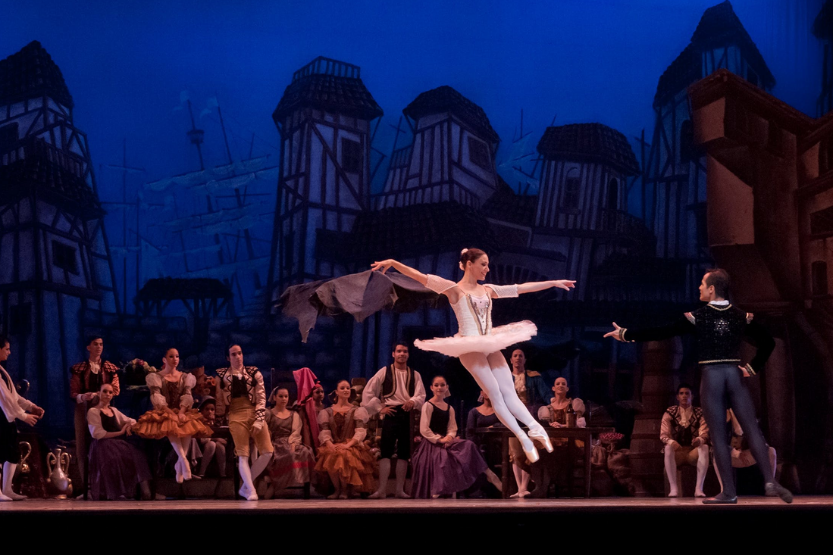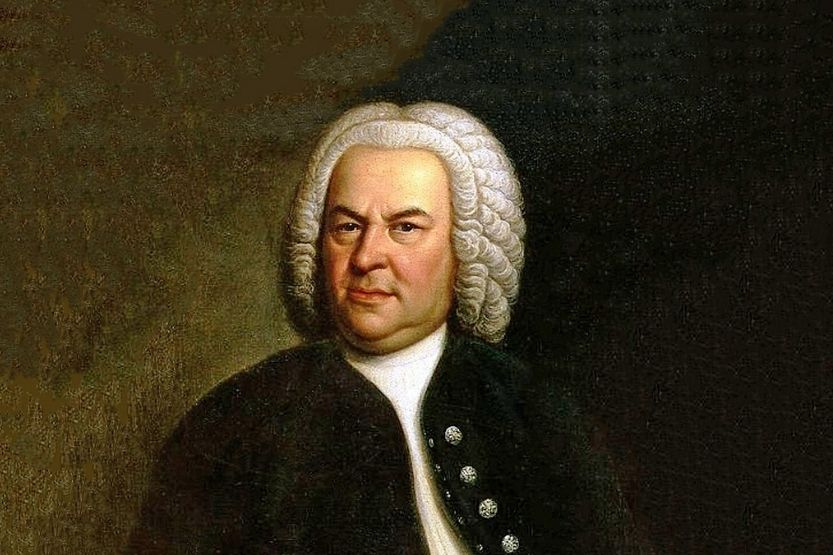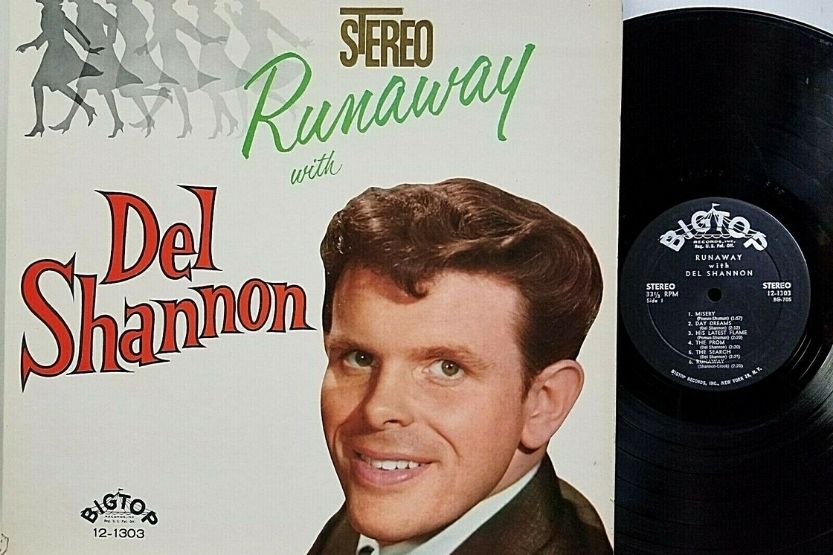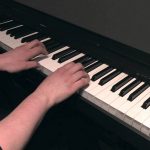Consider yourself a well-informed individual if you know certain music terms that the average person does not know. Do you know Chaconne Vs Passacaglia – what is the difference between them?
Even professional musicians find it difficult to define these two music terms. Some think that the chaconne is a series or sequence of vibrations across a short repeated theme or ostinato in the bass, such as a basso ostinato or ground bass. In the passacaglia, any voice can show the bass ostinato.
Passacaglia is a dance with a 3/4 time signature. But it is not associated with female or male dancers. On the other hand, the chaconne is similar to the passacaglia due to their passionate and fiery character. It is also of Spanish origin.
Read on to learn more about the chaconne and the passacaglia, their origins, and their differences.
Chaconne Vs Passacaglia

Two Different Forms of Music
The musical terms chaconne and passacaglia are hard to define, even for professional musicians. They are two different forms of music.
Chaconne Is a Series of Variations Throughout a Short Repeated Theme
Some believe that chaconne is a series or sequences of variations throughout a short repeated theme. It refers to the ostinato in the bass, or ground bass, or basso ostinato.
On the other hand, it is possible for passacaglia to appear, not just on the ground bass but also in any voice or instrument. Usually, the passacaglia will be in a dance form with a 3/4 time signature. It is not associated with either the female or male dancers.
Both Are Passionate and Fiery
Meanwhile, the chaconne is like the passacaglia because it is passionate and fiery and has Spanish origins. Some say that the chaconne is an old Spanish Dance tune that originated in Latin America.
Bach Created Chaconne
Others say that the chaconne is a musical composition having a moderate triple time with several variations recurring on a succession of chords. Experts give Johann Sebastian Bach credit for creating chaconne.
Bach composed chaconne as a solo instrumental music piece. This musical composition constitutes the fifth and final movement of the Partita No. 2 in D Minor, BWV 1004. He wrote this originally for the solo violin. It is the most challenging and one of the longest violin solo pieces ever composed in music history.
Passacaglia Is a Musical Form from Spain
Meanwhile, the passacaglia is also another musical form that also came from Spain during the 17th century. This musical form is usually based on a ground bass or basso ostinato and written in triple meter or measure.
Passacaglia Was Written as a Spanish Dance Accompaniment
Passacaglia was initially written as an accompaniment to Spanish dance. So, just like the chaconne, it originated and developed during the early Baroque era, with both being dance forms.
Reference sources say that passacaglia is an old Spanish or Italian dance tune. It is also defined as a musical composition for the instrument that consists of different variations. The compositions are typically on a ground bass with a moderately slow triple time.
Although the word passacaglia has Italian connotations, it is from the Spanish word passacalle, which means ‘street song.’ It is a musical form of repetitive variations, usually in 3/4 time. It first appeared in the dance form during the 17th century. The dance had an unsavory reputation and was regarded as quite fiery.
What Is “Ground” in Music?
It is quite fitting to explain the meaning of “ground” concerning our subject. This word will be recurring here and there in this article, so it would be best if I explain what this word means in music terms.
There are types of music where instead of moving the music forward and keeping the bass line constantly moving, many low instruments will latch onto a short melody. This melody consists of a dozen notes or even fewer, repeated throughout the music piece.
This is one example of music that you can consider as “ground.” Perhaps it has this name due to a basic ingredient of the mud that this kind of music seems to be associated with. This type of ground is referred to when you read ‘ground bass’ or any similar term.
More on Chaconne

Has a Passionate and Fiery Character
It is proper at this point to give you a more detailed explanation of what the chaconne is. You already know that it is somewhat similar to the passacaglia because of its passionate and fiery character.
Dance for Women
There is certain evidence that suggests it may have started as far as Mexico. The chaconne, some records say, is a dance only for women. Several accounts of early performances of this dance have led many to believe that two female dancers perform this dance with castanets as accompaniment.
Appeared Often in Early Ballets
This dance frequently appeared in the early ballets created by Jean-Baptiste Lully, a very influential person in the 17th century. The courts of France caught up with this trend at that time. During this period, dancers performed the chaconne with a triple meter in a major key as those composers arranged it.
Of Afro-Latin Origin
In Bach’s time, the chaconne had become synonymous with ‘ground.’ However, some say that the term’s origin went back to hundreds of years before Bach came into the scene and before it developed into a fiery triple-metered Spanish dance. Some say this latter style could be of Afro-Latin origin.
As time went on, chaconne dance was tempered and became more civilized. It slowed down its tempo, but it spread throughout all of Europe. It became the basis of hundreds of Italian violin ‘ciaconne’ and the dance that concludes all ballet sequences of French Baroque operas.
When it shows up, in whatever music production, the chaconne was used as the ‘ground’ with variations in the melody that unfold over repetitive chordal patterns and bass lines.
Again, chaconne vs passacaglia – what is the difference between them? Usually, male dancers perform passacaglia with 3/4 time-signature. Also, chaconne and passacaglia are both passionate, fiery, and of Spanish origin.
More on Passacaglia

Similar to Chaconne
You already know that the passacaglia is somewhat similar to the chaconne. But there was a fundamental change in the character of the passacaglia and the chaconne in the early 19th century.
Different in Tempo, Character, and Form
Even if their roots originated on the guitar, both music and dance forms would present a different picture regarding their tempo, character, and form. But this depends on where, for what purpose, and when they were composed.
Originated from Spain
Like the chaconne, the passacaglia came from Spain. History records show that Spanish guitarists in the 17th century walked the streets and went from house to house, vamping and doing short chordal patterns and bass lines until they reached their destination. And then, they will start the next song and complete it in the same manner.
Eventually, their vamp improvisations developed into a distinct musical form and took its name from ‘pasar,’ Spanish for the world walk, and ‘calle,’ Spanish for the word street. This was the period in history that the word ‘passacalle’ was born. It was the same as the passacaglia.
At first, this musical form differs from the chaconne due to its brevity or short durations of its repetitive bass lines. There are usually only four notes that are played in a descending and minor-mode style.
Songs with Passacaglia Style
Some of the not too recent music hits where you can hear this passacaglia style are in the song “Runaway” by Del Shannon and the instrumental piece “Walk Don’t Run” by the Ventures. As the genre became popular, it has French and Italian translations, ‘passacaille,’ and ‘passacaglia,’ respectively.
Passacaglia Style Evolution
Over time, this musical form also went into its metamorphosis, just like all types of music forms. The passacaglia spread out, slowed down, and became nearly switchable with the chaconne.
Now, the word does not only refer to a street song. It can also denote a dance form. As a dance form, the passacaglia came into favor during the 17th century in the European Courts. But its passionate and fiery character earned it a reputation of being a bit scandalous.
During the 17th and 18th centuries, the French theaters adopted the passacaglia with a more reserved character and a sense of majesty quite different from its Spanish version. As a dance, it would usually be in a 3/4 time signature. Male dancers perform this dance.
Differences Between the Chaconne and Passacaglia
While they have similar roots and very similar characters with slight variations, these two music and dance forms – the chaconne, and the passacaglia – also have some differences. But distinguishing their differences correctly is quite a challenge. It is a dilemma that even professional musicians have difficulty in assessing.
Chaconne Less Strict than Passacaglia
One person believes that the chaconne tends to be a little looser, meaning it is less strict. For instance, the C minor organ passacaglia of Johann Sebastian Bach sticks closely to the repetitive bassline. But his D minor violin chaconne is going all over the place.
This person thinks that, in theory, the chaconne is grounded on a simple D-C-Bb-A descending bassline. However, you would not know it instantly the moment you hear it.
Bassline Could Appear in Any Instrument or Voice in the Passacaglia
Although the passacaglia has the same series of variations over a certain bass line, its bass line can also appear in other voices or instruments. Not just on the bass voice or instrument.
In the passacaglia, you can alter the chords in the music. However, you can only do this in line with the implied harmonics of the existing bass.
Bassline Does Not Change in the Chaconne
The chaconne is also a series of constant variations composed over a repeating bass line. Sometimes, it is simply the bass line, and sometimes there will be a chord progression in the series that complements the given bass line.
But the chord pattern or the bass line does not change during the composition. So, when a composer is asked to write music ‘above’ the given music, it should be interesting enough to support the entire music piece.
Passacaglia Is More Serious than Chaconne
The Chaconne is a type of music for a slow and majestic baroque dance. It often contains variations on a theme. The passacaglia is a type of music that is more serious, with triple meter, and uses a ground bass.
Generally, the passacaglia is a form of chaconne. One of their primary differences is that the chaconne is slower, milder, and more melancholy. Its expressions are not too pronounced. To a certain extent, it’s the other way around with the passacaglia.
Conclusion: Chaconne Vs Passacaglia
The terms chaconne and passacaglia are very difficult to define and differentiate, even for professional musicians. Some believe that the chaconne is a series or sequence of vibrations throughout a short repeated them or ostinato in the bass line.
An example is a ground bass or a basso ostinato. But with the passacaglia, that ostinato can appear in any voice. The chaconne is similar to the passacaglia because it is also fiery and passionate and has Spanish origins. They are both music and dance forms.
Related reading:
Euphonium Vs Baritone – What Are the Differences?
Cello Vs Bass – What Are Their Differences?







![Read more about the article Acciaccatura and Appoggiatura Grace Notes [Guide]](https://musicalinstrumentpro.com/wp-content/uploads/2022/09/acciaccatura-and-appoggiatura-grace-notes-300x200.jpg)

